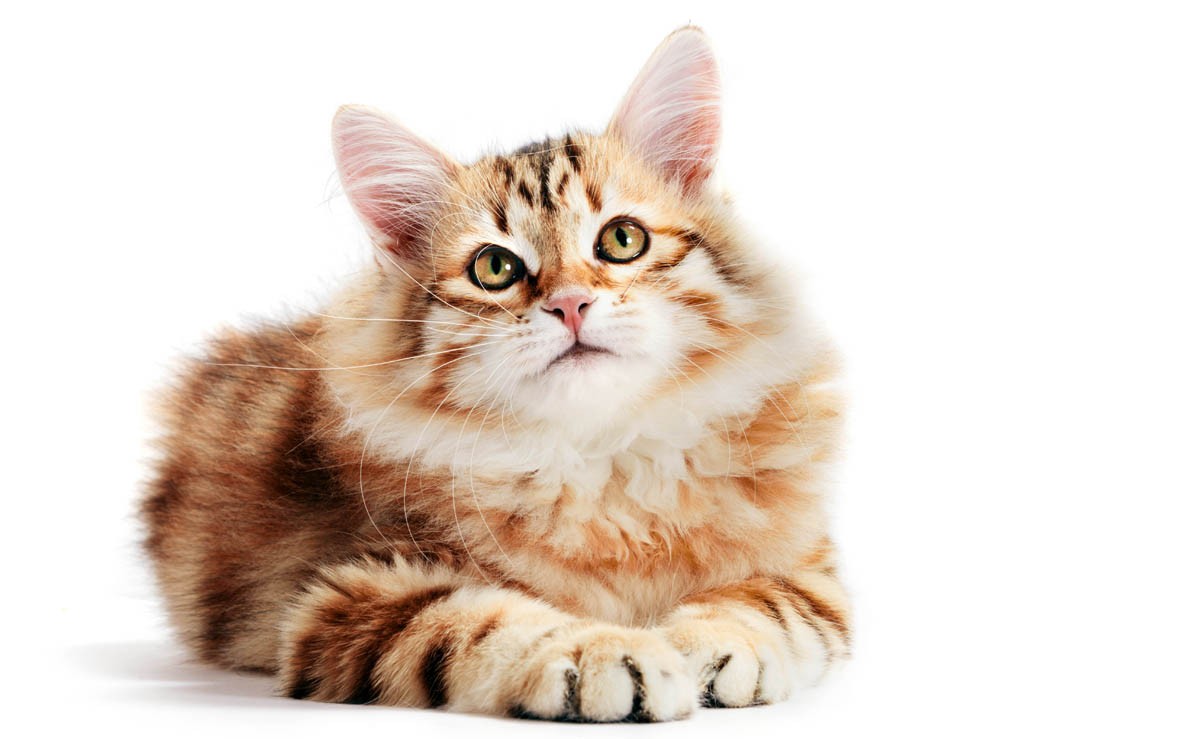At a glance
|
What is asthma?
Also known as feline bronchial disease, allergic bronchitis, allergic airway disease and allergic asthma), asthma is a noninfectious respiratory condition that is characterised by acute constriction of the lower airways, which results in coughing and respiratory distress. Asthma is one of the most common causes of respiratory diseases in cats, affecting around one in 100, attacks may range from mild to severe and life-threatening.
Inhalation of an allergen is the trigger of asthma with common allergens such as pollen, perfume, cigarette smoke, smoke from household fires, mould, household sprays (hairspray, air fresheners etc.) and dust from cat litter. Over-representation of Siamese cats suggests a genetic predisposition; however, cats of all ages and breeds can be asthmatic. Obese cats are at increased risk of developing asthma.
What happens during an asthma attack?

- The smooth muscles around the airways tighten and block the airflow.
- The walls of the airways swell and become narrower, blocking the airflow.
- The airways produce extra mucus, causing even more narrowing.
- Contraction and narrowing of the airways impede airflow into the lungs.
Symptoms
Video of a cat during an asthma attack
- Dry, hacking cough which may be mistaken for hairballs or gagging
- Wheezing
- Difficulty breathing (dyspnea)
- Blue lips and gums
- Sitting with the shoulders hunched over, neck extended with rapid, open-mouthed inhalations and exhalations (tachypnea)
- Lethargy
- Fatigue
- Exercise avoidance
Symptoms may be mild or severe, mildly affected cats may cough or wheeze occasionally while severely affected cats may cough and wheeze daily, leading to airway constriction and open-mouthed breathing/panting. A severe asthma attack is a medical emergency that can lead to death.
Diagnosis
There are other medical conditions with similar symptoms to asthma, so your vet may want to rule out heartworm, pneumonia, Bordetella and congestive heart failure. During the exam, the veterinarian will listen to the cat’s chest and breathing with a stethoscope.
Diagnostic workup:
- Chest x-ray: look for signs of bronchial inflammation and enlarged lungs, flattened diaphragm and doughnuts.
- Tracheal wash or airway lavage to check for the presence of eosinophils (a type of white blood cell) and infectious organisms.
- Fecal flotation: A test to look for worm eggs, proglottids (tapeworm segments) or protozoan (single-celled organisms) cysts in the feces.
- Complete blood count: A blood test that measures the cellular components of the blood (red blood cells, white blood cells and platelets. High numbers of a type of white blood cell known as eosinophils may be revealed in the CBC.
Treatment

- Oral glucocorticoids: Reduce inflammation with oral glucocorticoids. There may be side effects from long-term use of steroids such as diabetes, pancreatitis, increased urination, weight gain, behavioural changes. Cats start on oral steroids until the condition is stable. Medication will then be reduced until your cat is switched to inhaled steroids.
- Inhalant glucocorticoids: To reduce inflammation. There is a relatively new inhaler system on the market called AeroKat; Flovent is the most commonly used inhalant steroid. As inhaled steroids don’t get into the system as much as oral steroids there are fewer side effects. Administer by placing a mask over your cat’s mouth and nose to target the airways directly.
- Bronchodilators: Help to open the airway at times of severe coughing or wheezing; the most common bronchodilator is albuterol (Proventil®, Volmax®, Ventolin®).
In an emergency, get your cat to the closest vet immediately as you will not be able to treat this at home. Your veterinarian will usually inject a corticosteroid to reduce inflammation and use a bronchodilator to help open the airway. A life-threatening asthma attack will require the administration of ephedrine.
Reduce exposure by removing common triggers in the environment; this includes avoiding using scented products and airborne particles such as dust, smoking outside, switching to a dust-free type of cat litter (silicone and paper pellets are low in dust).
Air purifiers and humidifiers can also reduce the number of attacks as dry air is a trigger.
Weight loss for overweight cats, overseen by a veterinarian as sudden weight loss can cause feline hepatic lipidosis.
Frequently asked questions?
How can I naturally treat my cat for asthma? While there are certainly ways to decrease the incidence of asthma by avoiding triggers, medications are still required to ensure that if or when an asthma attack happens, the cat can be quickly treated.
Do cats with asthma sneeze? Sneezing isn’t a common symptom of asthma, but it can occur in some cats.
How do I know if my cat has a hairball or asthma? The signs of both can be similar but there are differences. A cat with a hairball will wretch, gag and vomit, a cat with asthma will cough, wheeze, breathe through the mouth and develop heavy and rapid breathing. If you are at all unsure, seek veterinary attention.
Is it normal for a cat to wheeze? Wheezing is not normal in cats, there is always an underlying medical reason why a cat is wheezing which should be investigated by a veterinarian.

